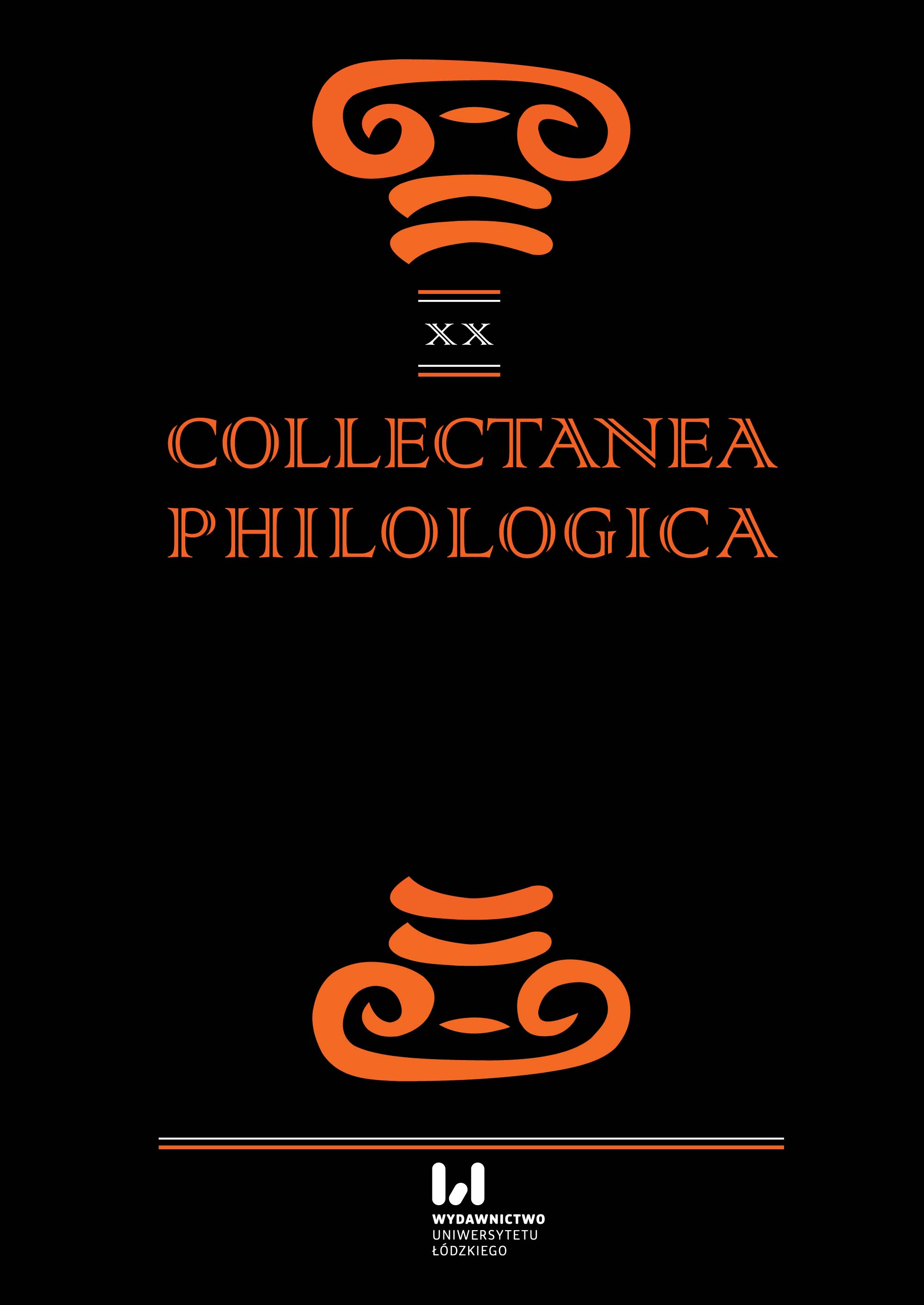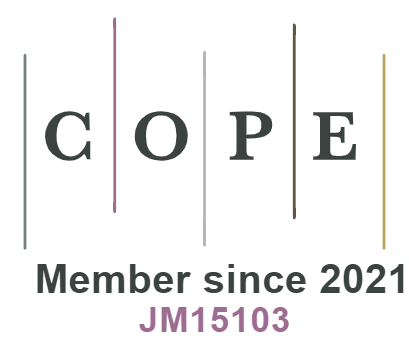The Orphic Theogonic Poems Attributed to Linos. Notes on the Testimony of Pausanias
DOI:
https://doi.org/10.18778/1733-0319.20.06Słowa kluczowe:
Lino, Pausanias Periegetes, las creencias órficas, la teogonía órfica, los órficosAbstrakt
I will discuss the connection between Linos and Orphics as it is outlined in the Description of Greece. Pausanias writes that Linos propagated in his songs the genealogy of the first deities of the Greek pantheon. According to Pausanias, this genealogy was similar to the one in Hesiod’s Theogony. Pausanias himself believed that the majority of Linos’ works were inauthentic. He was of the opinion that if Linos wrote anything, none of it has survived. However, no one has tried to explain why so many works were attributed to Linos. In my article I try to answer to this question.
Bibliografia
Adler, A. (1967–1971). Suidae lexicon. 4 vols. Leipzig: Bibliotheca Teubneriana.
Google Scholar
Ahbel-Rappe, S. (2010). Damascius Problems and Solutions Concering First Principles. Oxford: Oxford University Press.
Google Scholar
Athanassakis, A. N., Wolkow B. M. (2013). The Orphic Hymns. Baltimore: Johns Hoskins University Press.
Google Scholar
Bernabé, A. (1995). Una cosmogonía cómica. Aristófanes, Aves 685 ss. In: J. A. López (ed.). De Homero a Libanio. Estudios actuales sobre textos griegos II. Madrid: Ediciones Clásicas. 195–211.
Google Scholar
Bernabé, A. (1998). Platone e l’orfismo. In: G. Sfameni Gasparro (ed.). Destino e salvezza. Tra culti pagani e gnosi cristiana. Itinerari storico-religiosi sulle orme di Ugo Bianchi. Cosenza: L. Giordano. 37–97.
Google Scholar
Bernabé, A. (2007). Poetae Epici Graeci. Testimonia et Fragmenta. Pars II: Musaeus, Linus, Epimenies, Papytus Papyrus Derveni, Indices. Vol. 3. Berlin: De Gruyter.
Google Scholar
Bernabé, A. (2011). Platón y el orfismo. Diálogos entre religión y filosofía. Madrid: Abada Editores.
Google Scholar
Betegh, G. (2004). The Derveni Papyrus. Cosmology, theology and interpretation. Cambridge: Cambridge University Press.
Google Scholar
Borgeaud, Ph., Pirenne-Delforge V. (2008). Opera inedita. Essai sur la religion grecque. Recherches sur les Hymnes orphiques. Liège: Centre International d’Étude de la religion Grecque Antique.
Google Scholar
Burnet, J. (1967). Platonis opera. Vol. 1. Oxford: Clarendon Press.
Google Scholar
Casadesùs, F. (2008). Orfeo y orfismo en Platón. In: A. Bernabé, F. Casadesús (eds.). Orfeo y la tradición órfica. Un reencuentro, Madrid: Akal. 1239–1280.
Google Scholar
Christopoulos, M. (2010). Dark-Winged Nyx and Bright-Winged Eros in Aristophanes’ «Orphic» Cosmogony. The Birds. In: M. Christopoulos et al. (eds.), Light and Darkness in Ancient Greek Myth and Religion. Lanham: Lexington Book. 207–220.
Google Scholar
Dunbar, N. (1995). Aristophanes. Birds. Oxford: Oxford University Press.
Google Scholar
Fayant, M. Ch. (2014). Hymnes Orphiques. Paris: Les Belles Lettres.
Google Scholar
Fowler, H. N. (1970). Plato in Twelve Volumes. Cratylus, Parmenides, Greater Hippias, and Lesser Hippias. Vol. 4. Cambridge: Harvard University Press.
Google Scholar
Fraenkel, H. (1970). Apollonii Rhodii Argonautica. Oxford: Clarendon Press.
Google Scholar
Frazer, J. G. (1921). Apollodorus. The Library. Vol. 2. London: Heinemann.
Google Scholar
Hicks, R. D. (1972). Diogenes Laertius. Lives of Eminent Philosophers. Cambridge: Harvard University Press.
Google Scholar
Janko, R. (2002). ,,The Derveni Papyrus. An interim text”. Zeitschrift für Papyrologie und Epigraphik (141). 1–62.
Google Scholar
Jiménez, A. I. (2004). ,,Tratti orfici nella ornitogonia degli Uccelli di Aristofane”. Chaos e kosmos (5). 1–15.
Google Scholar
Jones, W. H. S. (1966–1971). Pausanias. Description of Greece. 5 vols. Cambridge: Harvard University Press.
Google Scholar
Kouremenos, Th., Parássoglou, G. M., Tsantsanoglou, K. (2006). The Derveni Papyrus. Firenze: Olschki.
Google Scholar
Laks, A., Most, G. W. (1997). Studies on the Derveni Papyrus. Oxford: Clarendon Press.
Google Scholar
Long, H. S. (1966). Diogenis Laertii vitae philosophorum. 2 vols. Oxford: Clarendon Press.
Google Scholar
Martínez, R. B. (2008). Lino. In: A. Bernabé, F. Casadesús (eds.). Orfeo y la tradición órfica. Un reencuentro, Madrid: Akal. 560–564.
Google Scholar
Martínez, R. B. (2008). Otros poetas griegos proximos a Orfeo. In: A. Bernabé, F. Casadesús (eds.). Orfeo y la tradición órfica. Un reencuentro. Madrid: Akal. 549–579.
Google Scholar
Morand, A. F. (2001). Études sur les Hymnes orphiques. Leiden: Brill.
Google Scholar
Most, G. W. (2006). Hesiod. Theogony, Works and Days, Testimonia. Cambridge: Harvard University Press.
Google Scholar
O’Neill, E. (1938). Aristophanes. Birds. The Complete Greek Drama. 2 vols. New York: Random House.
Google Scholar
Race, W. H. (2009). Apollonius Rhodius. Argonautica. Cambridge: Harvard University Press.
Google Scholar
Ricciardelli, G. (2000). Inni orfici. Milano: Mondadori.
Google Scholar
Ricciardelli, G. (2008). Los Himnos όrficos. In: A. Bernabé, F. Casadesús (eds.). Orfeo y la tradición órfica. Un reencuentro, Madrid: Akal. 325–348.
Google Scholar
Rocha-Pereira, M. H. (1973–1981). Pausaniae Graeciae descriptio libri 1-10. 3 vols. Leipzig: Bibliotheca Teubneriana.
Google Scholar
Ruelle, C. E. (1964). Damascii successoris dubitationes et solutiones. 2 vols. Brussels: Culture et Civilisation.
Google Scholar
Świercz, P. (2008). Jedność wielości. Świat, człowiek, państwo w refleksji nurtu orficko–pitagorejskiego. Katowice: Wydawnictwo Uniwersytetu Śląskiego.
Google Scholar
Trzcionkowski, L. (2013). Bios–Thanatos–Bios. Semiofory orfickie z Olbii i kultura polis. Warszawa: Sub Lupa.
Google Scholar
Von Albrecht, M. (1997). A History of Roman Literature. Leiden–New York–Koln: Brill.
Google Scholar
Wagner, R. (1894). Apollodori bibliotheca. Pediasimi libellus de duodecim Herculis laboribus. Leipzig: Bibliotheca Teubneriana.
Google Scholar
West, M. L. (1966). Hesiod. Theogony. Oxford: Clarendon Press.
Google Scholar
West, M. L. (1983). Linus. In: Idem (ed.), The Orphic Poems, Oxford: The Clarendon Press. 53–67.
Google Scholar












